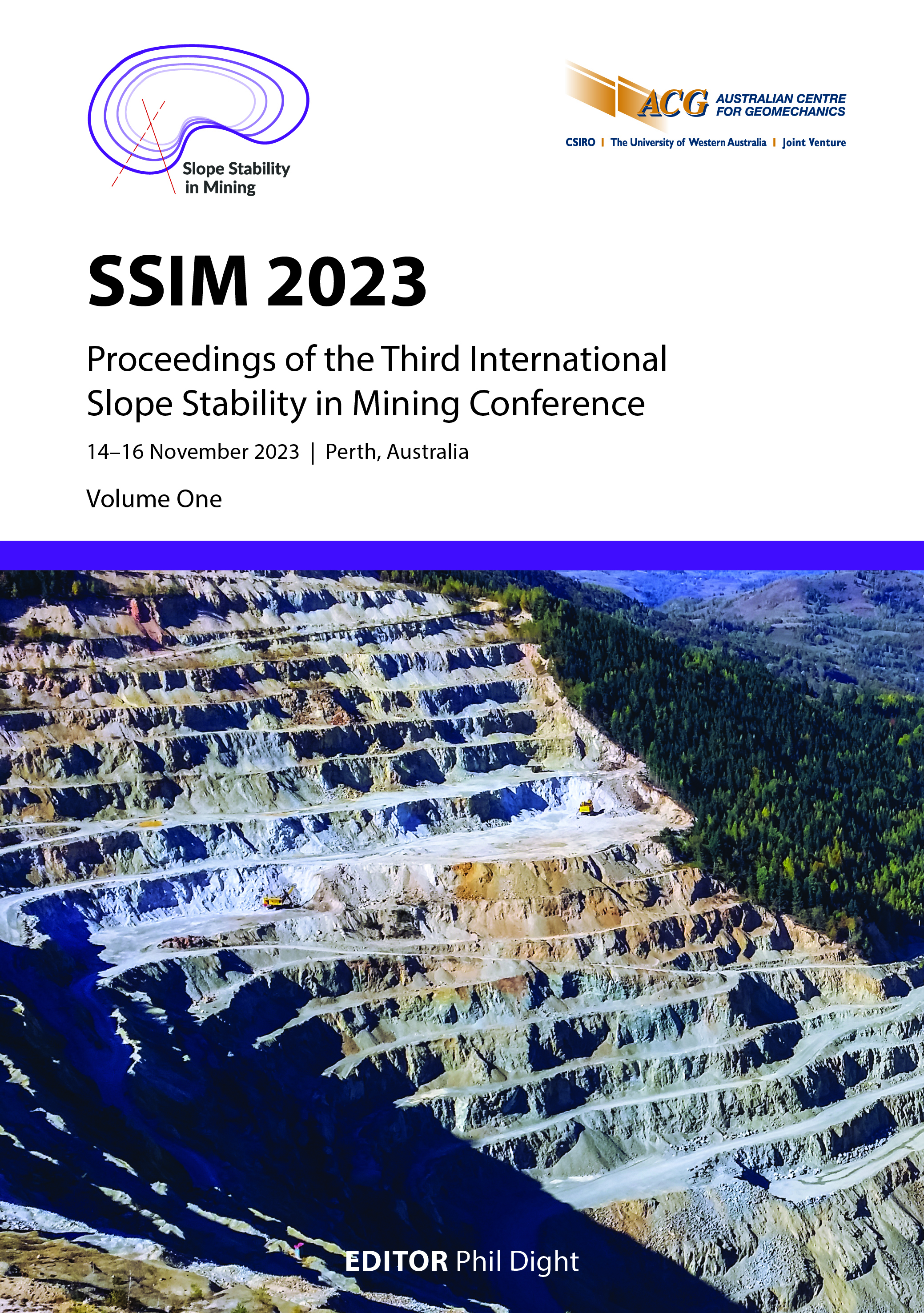Safe management and optimisation of deforming pit walls

|
Authors: Abrahams, G |
DOI https://doi.org/10.36487/ACG_repo/2335_0.01
Cite As:
Abrahams, G 2023, 'Safe management and optimisation of deforming pit walls', in PM Dight (ed.), SSIM 2023: Third International Slope Stability in Mining Conference, Australian Centre for Geomechanics, Perth, pp. 3-22, https://doi.org/10.36487/ACG_repo/2335_0.01
Abstract:
Deforming pit walls are not uncommon in surface mining, primarily due to the complexity and unpredictability of ground conditions. Indeed, slope deformation beyond original design expectations should not always be considered unacceptable because, if managed safely and proactively, the mining operation can continue to optimise its planned ore recovery. Due to the significant advances in slope monitoring technologies over the last 15 years, safe management of slope deformation is now very achievable with a high degree of confidence provided that monitoring and reconciliation approaches are best practice. Furthermore, the author argues that early detection of slope deformation should also be industry standard since this allows the economic risk of any slope instability or complete failure to be assessed and then managed more optimally. Analysis of observed slope performance provides detailed information and verification on actual geological and structural conditions, slope behaviour in response to mining, and identification of the actual failure mechanism/s. Such information cannot be expected to be available at such a high level of confidence during the initial design stage. A detailed back-analysis of an area of deformation, obtained by both sub-surface and surface monitoring, will enable the different remediation options to be assessed. This may include continuing to mine the existing designed slope, but with Factor of Safety (FoS) below the original design acceptance criteria (DAC) and, in some cases with an FoS ≈ 1, if slope behaviour is considered to deform gradually rather than collapse catastrophically and all safety aspects are fully managed. Review of high precision slope performance data for a historic slope should be a critical part of future slope designs to enable fully optimised slope designs. This may even enable the option to consider relaxing the DAC when the potential failure mechanism is much better understood. This paper reviews case studies of slope deformations with very different behaviours and economic risks, and shares learnings to provide guidance on managing both the safety and economic aspects of pit wall instabilities. A proposed process flow is provided for how slope deformations should be assessed, risks identified, managed and incorporated into future slope designs and mine plans.
Keywords: slope stability; deformation; collapse; observational mining
References:
Bakken, KM, Chapin, GK & Abrahams, MG 2020, ‘Trigger action response plan development and optimisation at the Bingham Canyon Mine’, in PM Dight (ed.), Slope Stability 2020: Proceedings of the 2020 International Symposium on Slope Stability in Open Pit Mining and Civil Engineering, Australian Centre for Geomechanics, Perth, pp. 177–190,
/2025_07
Carter, TG 2015, ‘On increasing reliance on numerical modelling and synthetic data in rock engineering’, paper presented at the 13th ISRM International Congress of Rock Mechanics, Montreal.
Carter, TG & Barnett, W 2021, ‘Improving reliability of structural domaining for engineering projects’, Rock Mechanics and Rock Engineering, vol. 55, no. 12.
Dick, GJ, Eberhardt, E, Cabrejo-Liévano, AG, Stead, D & Rose, ND 2014, ‘Development of an early-warning time-of-failure analysis methodology for open-pit mine slopes utilizing ground-based slope stability radar monitoring data’, Canadian Geotechnical Journal, vol. 52, pp. 515–529.
Hawley, PM & Cunning, J 2017, Guidelines for Mine Waste Dump and Stockpile Design, CSIRO, Carlton.
Peck, RB 1969, ‘Advantages and limitations of the observational method in applied soil mechanics’, Geotechnique, vol. 19, issue 2, pp. 171–187.
Sharon, R & Eberhardt, E 2020, Guidelines for Slope Performance Monitoring, CSIRO, Carlton.
Steffen, OKH, Contreras, LF, Terbrugge, PJ & Venter, J 2008, ‘A risk evaluation approach for pit slope design’, paper presented at the 42nd US Rock Mechanics Symposium, American Rock Mechanics Association, Alexandria.
Wylie, DC & Mah, CW 2004, Rock Slope Engineering, 4th edn, Spon Press, New York.
© Copyright 2025, Australian Centre for Geomechanics (ACG), The University of Western Australia. All rights reserved.
View copyright/legal information
Please direct any queries or error reports to repository-acg@uwa.edu.au
View copyright/legal information
Please direct any queries or error reports to repository-acg@uwa.edu.au

